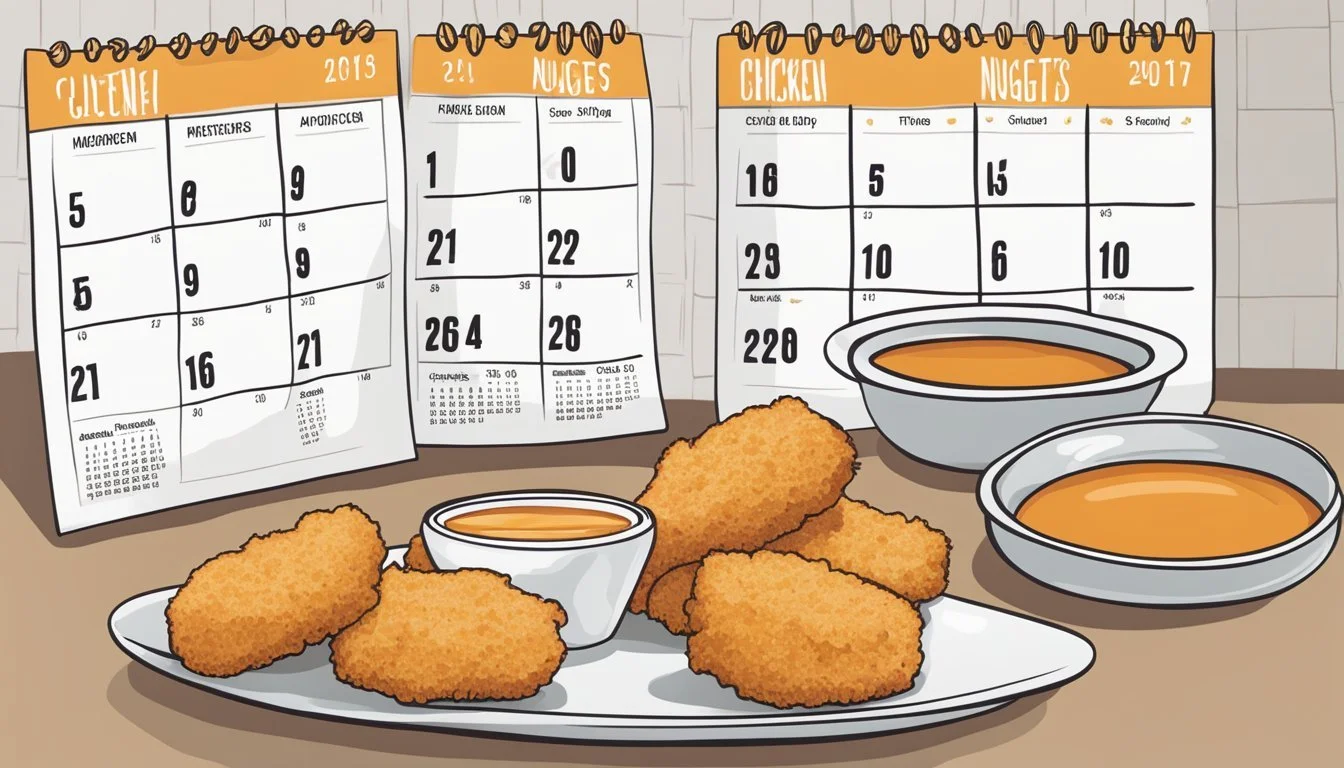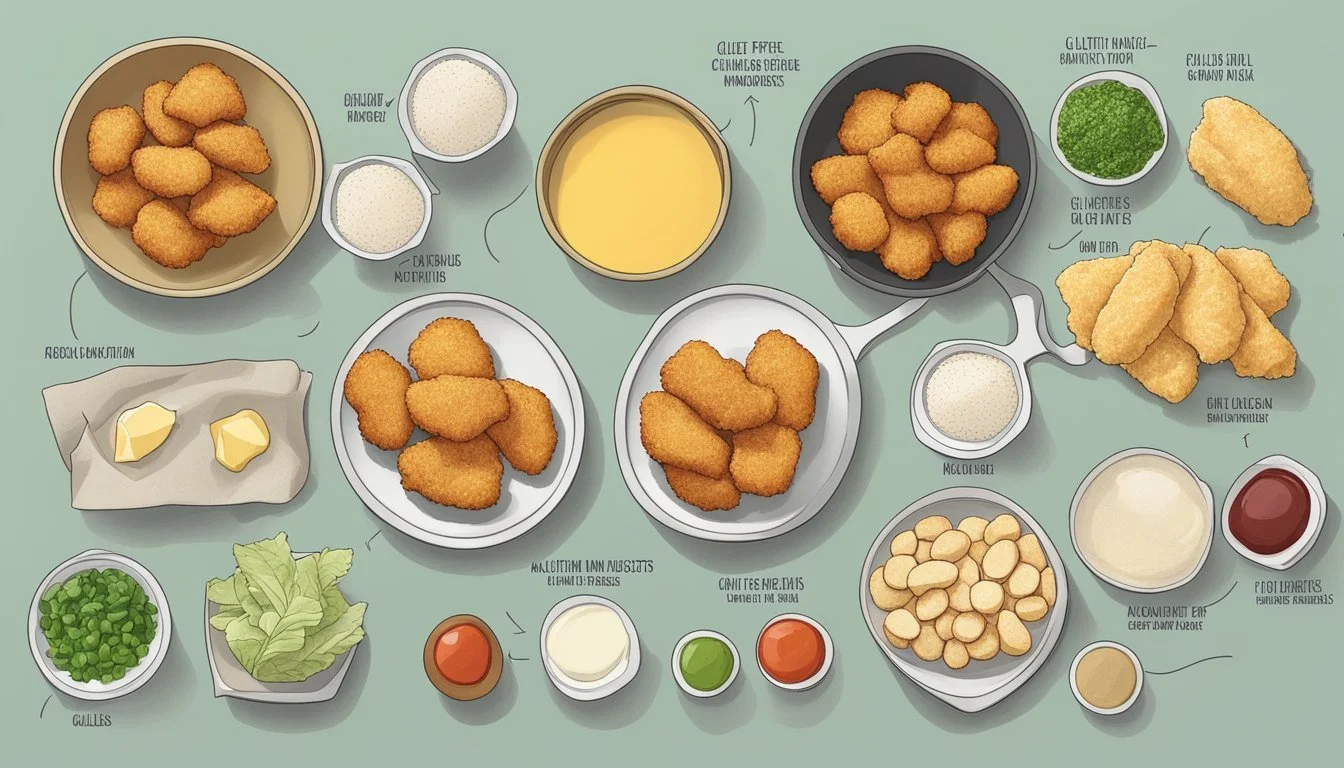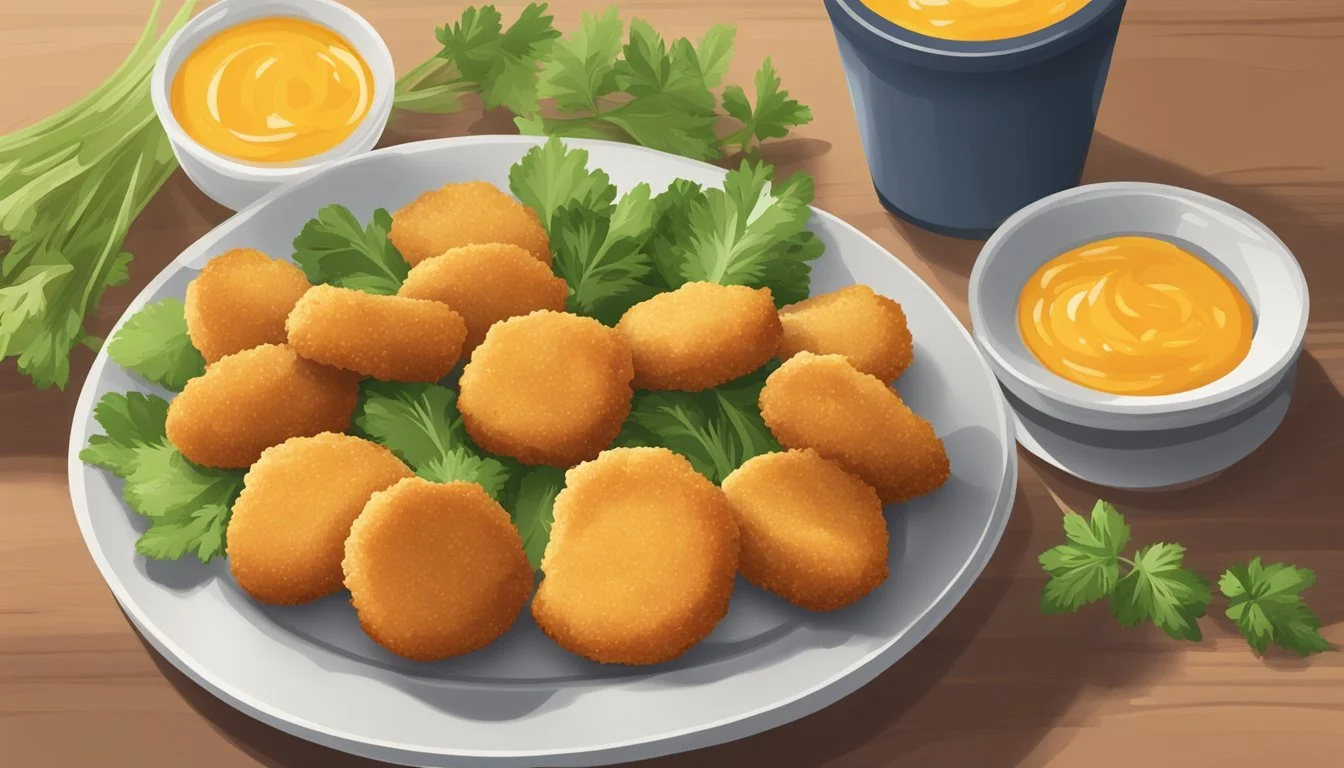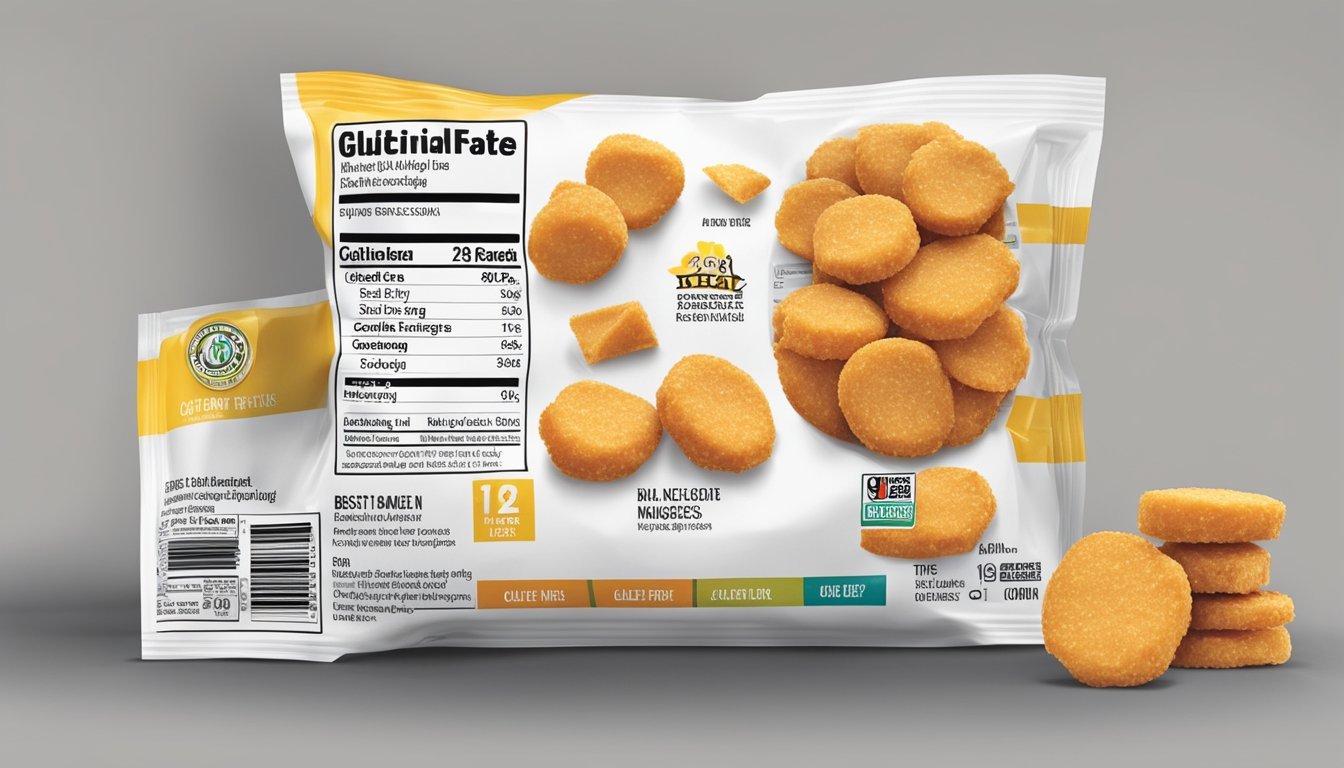How Long Do Gluten-Free Chicken Nuggets Last?
Shelf Life and Storage Tips
Gluten-free chicken nuggets are a tasty and convenient option for those sensitive to gluten or looking for healthier meal alternatives. When stored properly in the refrigerator, gluten-free chicken nuggets typically last for 3-4 days. This short shelf life highlights the need to consume them relatively quickly or consider freezing them to extend their usability.
Refrigerated or frozen, the longevity of gluten-free chicken nuggets can differ. For long-term storage, freezing the nuggets is an excellent choice as frozen gluten-free chicken nuggets can last up to 3 months with optimal freshness when stored at a consistent 0°F. Proper storage is crucial; either well-sealed packaging or airtight containers can help preserve the quality and prevent freezer burn.
It's important to follow reheating instructions to maintain their taste and texture. Baking or air frying them at 350°F ensures that they are thoroughly heated while preserving their flavor. Taking these steps ensures that the nuggets remain delicious and safe to eat, whether freshly stored or frozen.
What Are Gluten-Free Chicken Nuggets?
Gluten-free chicken nuggets are a popular option for those with gluten sensitivities or celiac disease. These nuggets are made from boneless chicken breasts that are cut into bite-sized pieces.
A typical gluten-free nugget recipe uses simple ingredients such as gluten-free flour, seasonings, eggs, and gluten-free breadcrumbs. This ensures that there is no cross-contamination with gluten.
To prepare, the chicken pieces are coated in a mixture of gluten-free flour and spices, dipped in beaten eggs, and then breaded with gluten-free breadcrumbs. This layering creates a crispy outer texture while keeping the inside tender and juicy.
Some common ingredients in gluten-free nuggets include rice flour, salt, pepper, paprika, and other seasonings. Rice flour and panko breadcrumbs are often used as alternatives to traditional wheat-based coatings.
Gluten-free chicken nuggets provide an excellent source of protein as they are made primarily from chicken breasts, which are known for their high protein content. This makes them a nutritious and satisfying meal option.
Cooking methods vary, with nuggets often being baked in the oven or air-fried. Both methods can achieve a crispy texture while using minimal oil, making them a healthier choice compared to deep frying.
Nutritionally, gluten-free nuggets tend to be similar to traditional nuggets but with the added benefit of being suitable for gluten-free diets. This makes them a versatile option for families and individuals seeking to avoid gluten in their meals.
By using simple ingredients and easy preparation methods, gluten-free chicken nuggets can be a flavorful and convenient option for anyone looking to enjoy a classic comfort food without the gluten.
Ingredients and Substitutions
Gluten-free chicken nuggets are often made using simple ingredients that are easy to find. The primary ingredient is chicken breast, which is boneless and skinless.
For the breading, a combination of gluten-free flour, cornstarch, and gluten-free breadcrumbs or panko bread crumbs is typically used. Rice flour can be a great alternative for the gluten-free flour, providing a light and crunchy texture.
The breading process usually involves an egg mixture. This mixture often consists of eggs and milk, which help the breading adhere to the chicken. Some recipes suggest adding hot sauce for an extra kick.
Seasonings are crucial for adding flavor. Common spices include salt, paprika, garlic powder, and onion powder. These can be adjusted based on personal preferences.
Oil is needed if you're opting to fry the nuggets. For deep frying, use an oil with a high smoke point, such as vegetable oil or canola oil. For baking, a light coating of oil on the baking sheet helps achieve a crispy exterior.
A baking option is also available for those who prefer a less greasy version. In some cases, recipes call for xanthan gum to help bind the ingredients and provide a better texture.
For those requiring a grain-free option, substituting traditional flours with blends containing almond flour or coconut flour can be effective. Adjustments in the recipe may be needed to account for different absorption rates of these flours.
By understanding these ingredients and potential substitutions, one can create delicious gluten-free chicken nuggets tailored to their dietary needs.
Preparing Gluten-Free Chicken Nuggets
Ingredients:
Gluten-free flour mixture (flour, salt, pepper)
Eggs
Milk
Gluten-free breadcrumbs
Cut the chicken breasts into nugget-sized pieces.
Set up a breading assembly line. Use five dishes: one for raw chicken pieces, one for gluten-free flour mixture, one for beaten eggs and milk, and one for gluten-free breadcrumbs.
Baking Instructions:
Preheat the oven to 375º F.
Coat the chicken pieces in flour mixture, then dip in egg mixture, and finally coat with breadcrumbs.
Line the nuggets on a parchment paper-lined baking sheet.
Spray with light oil to ensure crispiness.
Bake for 20-25 minutes until golden brown.
Air Fryer Instructions:
Preheat the air fryer to 350º F.
Follow the same breading steps as for baking.
Place the nuggets in the air fryer basket.
Cook for 7-10 minutes, flipping halfway through for even cooking.
Deep Frying Instructions:
Heat oil in a deep fryer or deep skillet to 360º F.
Bread the chicken pieces as above.
Fry the nuggets in batches for 7-8 minutes, until golden brown.
Remove using tongs and drain on paper towels.
Cooking Tips:
Ensuring the internal temperature reaches 165º F is crucial for safety.
Homemade gluten-free nuggets should be refrigerated if not consumed immediately.
Cooking Techniques and Equipment
Air Fryer: Air fryers are a popular choice for cooking gluten-free chicken nuggets. They require minimal oil and can produce crispy results. Preheat the air fryer to 375ºF, arrange the nuggets in a single layer, and cook for 7-10 minutes, turning them halfway through for even crisping.
Oven: Baking in an oven is another effective method. Preheat to 375ºF. Place the nuggets on a parchment paper-lined baking sheet and spray lightly with oil. Bake for 10-15 minutes, flipping halfway, ensuring an even, golden-brown exterior.
Deep Frying: For a traditional crispy texture, deep frying is optimal. Heat oil in a deep fryer or Dutch oven to 350ºF. Fry the nuggets in batches for 7-8 minutes until they are golden brown. Use tongs to handle the nuggets safely.
Food Processor: A food processor is useful for blending ingredients like ground chicken and spices to a uniform consistency. This ensures the nuggets have even flavor distribution and a consistent texture.
Other Equipment:
Parchment Paper: Essential for lining baking sheets to prevent sticking.
Tongs: Useful for flipping nuggets and transferring them from hot oil without getting burned.
Mixing Bowls: Needed for combining ingredients before shaping the nuggets.
Baking Sheets: For arranging the nuggets during baking.
Using the right equipment and techniques ensures that gluten-free chicken nuggets are cooked to perfection, whether baked, air fried, or deep fried.
Serving and Pairing Suggestions
Gluten-free chicken nuggets are a versatile and delicious meal option. They can be paired with a variety of sauces and sides to create a satisfying dining experience.
Sauces:
BBQ Sauce: The smoky flavor complements the crispy nuggets well.
Ketchup: A classic choice that works for all ages.
Honey Mustard: Adds a sweet and tangy taste.
Ranch Dressing: Creamy and perfect for dipping.
Honey: For those who enjoy a touch of sweetness.
Sides:
Gluten-Free Onion Rings: A crunchy side that pairs beautifully with chicken nuggets.
Roasted Potatoes: Seasoned with herbs, they provide a savory contrast.
Gluten-Free French Fries: A classic match that never disappoints.
Steamed Vegetables: For a healthier option, adding balance to the meal.
Presentation Tips:
To elevate the meal experience, consider serving the nuggets with a small dipping bowl of each sauce. Arrange the sides neatly around the nuggets on a large platter.
By carefully selecting sauces and sides, one can enhance the flavors of gluten-free chicken nuggets, making the meal enjoyable and varied for family and friends.
Storage Guidelines
To maintain the freshness and safety of gluten-free chicken nuggets, proper storage is essential.
Refrigeration: Store gluten-free chicken nuggets in an airtight container in the fridge. They will remain safe to eat for 3-4 days.
Freezing: For longer storage, gluten-free chicken nuggets can be frozen. Ensure they are placed in airtight containers or freezer bags to avoid freezer burn. They can last in the freezer for 1-3 months.
Avoid Cross Contamination: Those with celiac disease must ensure nuggets are stored away from gluten-containing foods. Separate containers and utensils should be used to prevent cross contamination.
Healthy Meal Prep: Store portions in single-serving bags for quick, healthy meal prep. This can save time and ensure a consistent, gluten-free diet.
Using these guidelines helps keep gluten-free chicken nuggets safe and delicious.
Shelf Life and Safety Considerations
Storage is key. Gluten-free chicken nuggets can last up to 3-4 days in the refrigerator. It is crucial to store them in airtight containers to prevent moisture and bacterial growth. For longer storage, freezing is recommended, extending their shelf life to about 1-2 months.
Cross contamination must be avoided, especially for those with celiac disease. Always keep gluten-free nuggets separate from gluten-containing foods. Use dedicated utensils and cooking surfaces to ensure there is no accidental gluten exposure.
When it comes to safety, cooking the nuggets to the correct internal temperature is essential. Gluten-free chicken nuggets should reach an internal temperature of 165°F (74°C) to ensure they are safe to eat. Use a food thermometer to verify the temperature.
Here are a few tips:
Label containers with the date to track how long they have been stored.
Avoid reheating multiple times, as this can increase the risk of foodborne illness.
Reheat in an oven or air fryer at 350°F for optimal texture and safety.
Proper handling and storage can help maintain the quality and safety of gluten-free chicken nuggets.
Remember to follow these guidelines to enjoy them safely, whether you have celiac disease or are simply choosing a gluten-free diet.
Tips for Ensuring Quality and Freshness
Proper Storage: To maintain the quality and freshness of gluten-free chicken nuggets, store them in an airtight container in the refrigerator. This prevents moisture and air from affecting their texture and flavor.
Refrigeration Time: Gluten-free chicken nuggets can be kept in the refrigerator for up to 3-4 days. After this period, their quality may diminish, and they might no longer be crispy or juicy.
Freezing for Longevity: If you want to extend the shelf life of your chicken nuggets, freezing is a great option. Place the nuggets in a single layer on a baking sheet to freeze initially, then transfer them to a sealed bag or container. They can last up to 2-3 months.
Reheating Properly: To reheat frozen gluten-free chicken nuggets and ensure they stay crispy and golden brown, use an oven or air fryer rather than a microwave. This helps retain their texture and juiciness. Preheat the oven to 375°F (190°C) and bake for 10-15 minutes.
Avoid Cross-Contamination: Always use clean utensils and surfaces when handling gluten-free chicken nuggets to maintain their quality and prevent contamination with gluten-containing ingredients.
Check for Signs of Spoilage: Before consuming stored chicken nuggets, always check for off smells, discoloration, or slimy textures. These are indicators that the nuggets are no longer fresh and should not be eaten.
Labeling: When storing chicken nuggets, label the container with the date of preparation. This makes it easier to track the shelf life and ensure you are consuming them within a safe timeframe.
By following these tips, you can enjoy delicious, crispy, and juicy gluten-free chicken nuggets while ensuring they remain fresh.
Gluten-Free Chicken Nuggets for Special Diets
Gluten-free chicken nuggets cater to individuals with special dietary needs, such as those with celiac disease or gluten sensitivities. These nuggets are crafted without wheat-based ingredients, ensuring they are safe for gluten-free diets.
In addition to being gluten-free, many recipes are versatile enough to address other common dietary restrictions. For example, nuggets can be made dairy-free by using non-dairy substitutes for milk in any coatings or sauces. Using rice flour or gluten-free panko crumbs helps achieve this.
Another consideration is creating egg-free nuggets for those with egg allergies. Alternatives like flaxseed meal mixed with water or commercial egg replacers can serve as binding agents without compromising texture.
Options for nut-free chicken nuggets are essential for those with nut allergies. Ensuring that all ingredients and preparation surfaces are free from nuts is crucial. Corn tortilla chips or crushed gluten-free crackers make excellent nut-free coatings.
Table of Substitutions for Special Diets:
Dietary Need Substitution Gluten-Free Gluten-free flour, panko crumbs Dairy-Free Non-dairy milk Egg-Free Flaxseed meal + water, commercial egg replacer Nut-Free Corn tortilla chips, crushed gluten-free crackers
These adjustments ensure that gluten-free chicken nuggets remain a delicious and safe option for people with various allergies and dietary requirements. By using thoughtful substitutions, it's possible to create nuggets that everyone can enjoy.
Purchasing and Brand Recommendations
When purchasing gluten-free chicken nuggets, it's essential to consider brands known for their quality and taste.
Sprouts gluten-free nuggets receive high praise for their juicy texture and flavorful seasoning. These nuggets are widely available in grocery stores and provide a great combination of quality and taste.
Applegate offers another reliable option. Despite being pricier at $15.99 for 16 ounces, some testers noted their resemblance to McDonald's nuggets in appearance.
Caulipower provides both gluten-free chicken nuggets and tenders, made with a unique blend of rice flour, yellow corn flour, oat fiber, chickpea flour, dried cauliflower, and potato starch. This brand is popular for its natural ingredients and innovative approach to gluten-free breading.
Brands to avoid include Ian's. Reviews indicate that Ian's nuggets frequently rank poorly in taste tests, with complaints of dryness and bland flavor. Additionally, Ian’s gluten-free nuggets can be expensive, priced around $14.00 for a smaller box.
For those looking to save money, it's advisable to seek bundle deals or bulk packaging options. Comparing prices with similar products in the market ensures you get a fair deal.
When shopping for gluten-free chicken nuggets, checking affiliate links and reviews can also provide additional information and potentially lead to discounts or exclusive deals. Always verifying gluten-free certification can give peace of mind for those with celiac disease or gluten sensitivity.
Investing time in researching brands and reading reviews can help in making informed decisions and enjoying tasty, gluten-free chicken nuggets.












